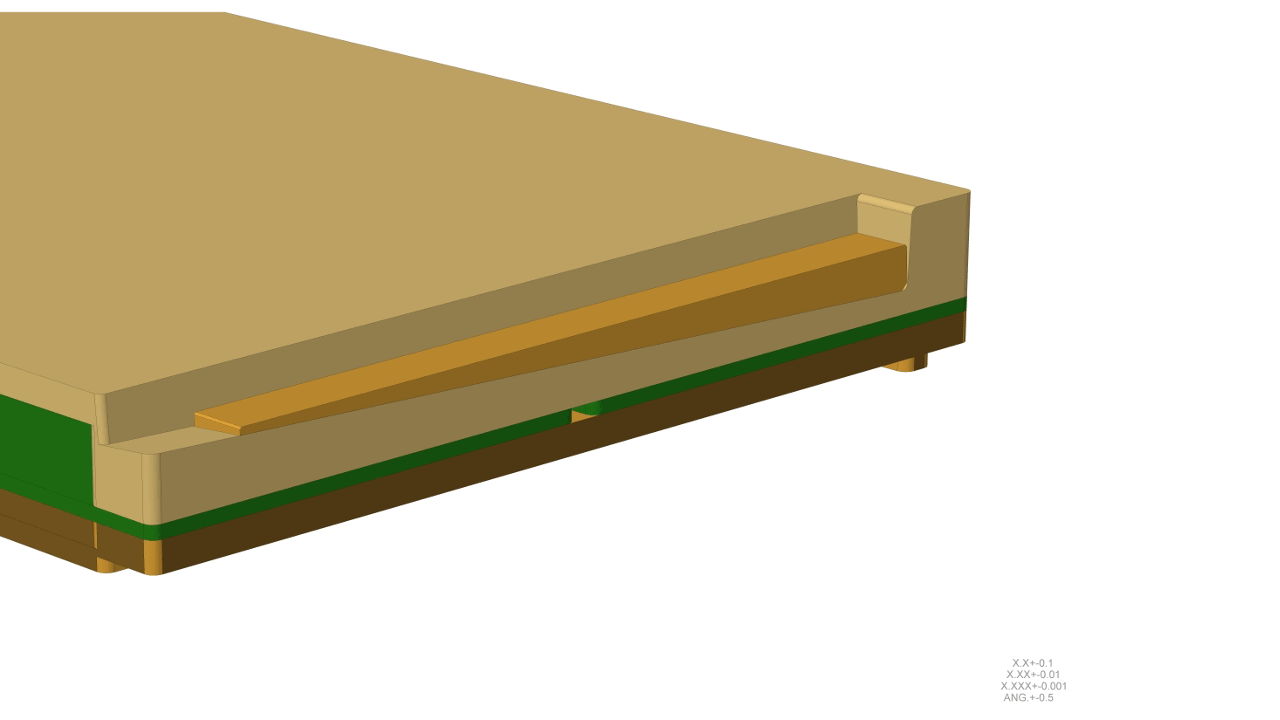
PERFORMANCE INTERCONNECT


HEATBIND™ SOLID RETAINER SYSTEM
Good-bye wedgelocks, HELLO HEATBIND!

Advanced Solid Thermal Retainer
HEATBIND™ is a thermal interface system specifically designed for conduction cooled applications.
The system employs ramps integrated into the edges of the plug-in module, allowing the solid retainers to achieve is the world's best performing thermal connection for two reasons:
-
solid retainers are made from oxygen-free copper with a thermal conductivity of 394 W/mK.
-
the highest possible area of thermal interface is achieved between the plug-in module and chassis.
HEATBIND™ achieves a higher area of thermal interface with a single junction between the monoblock frame and the solid retainer thereby reducing the thermal resistance of the system making it superior in performance to any other open or patented retainer technology.
The driving screw, has dual action onto the HEATBIND™ solid retainer: it pushes the retainer to lock the module into the chassis slot and it pulls the retainer to unlock the module from the chassis slot. Most wedgelocks do not feature the push-pull action and consequently tend to remain wedged in the locked state even if the locking screw is loosened.
HEATBIND™ is designed to conform to VPX architecture per ANSI/VITA 48.0-2022, VITA 100.11, VNX+ architecture per VITA 90.4, Compact PCI Serial and Compact PCI Serial Space applications, and ADHA Spaceflight applications.
We welcome any inquiry and we are glad to adapt HEATBIND™ to any card configuration. Samples are available for testing.
Production quantities are available with a 8-week lead-time.
Click below to learn more:
Vibration and Shock
qualification levels and duration:
• Random vibration per MIL-STD-810H, VITA 47.1 Section 4.4.3 (Vibration Class V3), in 3-Axis, each: 12 Grms for 30 minutes, 17.5 Grms for 15 minutes, 22 Grms for 15 minutes, 25 Grms for 15 minutes.
• Sinusoidal sweep vibration at 10G peak 5-2000 Hz for 10 minutes/axis per IAW MIL-STD-810H.
• Shock Vibration per IAW MIL-STD-810H Method 516.8, Figure 516.8-5. 40G, 11msec Half sine shock pulses in 3 positive and 3 negative hits.
Conclusion: PASSED.
Following test exposure, there was no evidence of module movement. In addition, there is no indication of rotation/loss of preload in the two drive mechanism fasteners. The drive mechanism had no signs of torque relaxation. In addition, the unit was marked on the top of the heat plate adjacent to the fixture rails prior to following test exposure and no indication of movement was observed. Also, detailed inspection of the unit indicates no evidence of fretting on unit top side and bottom side of the conduction rails surfaces. Following vibration exposure, the HEATBIND driver mechanisms exhibited smooth operation in clockwise and counterclockwise directions of rotation.
Testing was conducted on 29/11/2024 at PARAGON SYSTEMS, 18, Basaltic Road, Concord, ON, Canada, L4K 1G6
(accredited facility in accordance with A2LA 1942.01)
Thermal Test Report:
Test date and facility:
Testing was conducted on 07/01/2025 at Wolf Advanced Technology, 175 Mostar Street, STE 200, Stouffville, ON, Canada.
Test method:
Conducted in accordance with the VITA 47.1 - 2019 standard, a recognized guideline for thermal testing in the industry.
Test conditions:
Test units were subjected to thermal testing under room temperature conditions using a liquid-cooled test fixture.
Testing was conducted at two GPU power levels (90W and 120W).
DUT 1: 3U VPX copper card with Wavetherm SW5-43-270-250-M25-BA-30D
locked with installation torque of up to 1.24 Nm.
DUT 2: 3U VPX copper card with HEATBIND solid retainers part numbers RPLU1110ZZB and RPRU1110ZZB
locked with installation torque of up to 1.3 Nm.
Test conclusion:
The unit employing HEATBIND retainers offers good thermal performance in dry interface conditions.
Test results:













